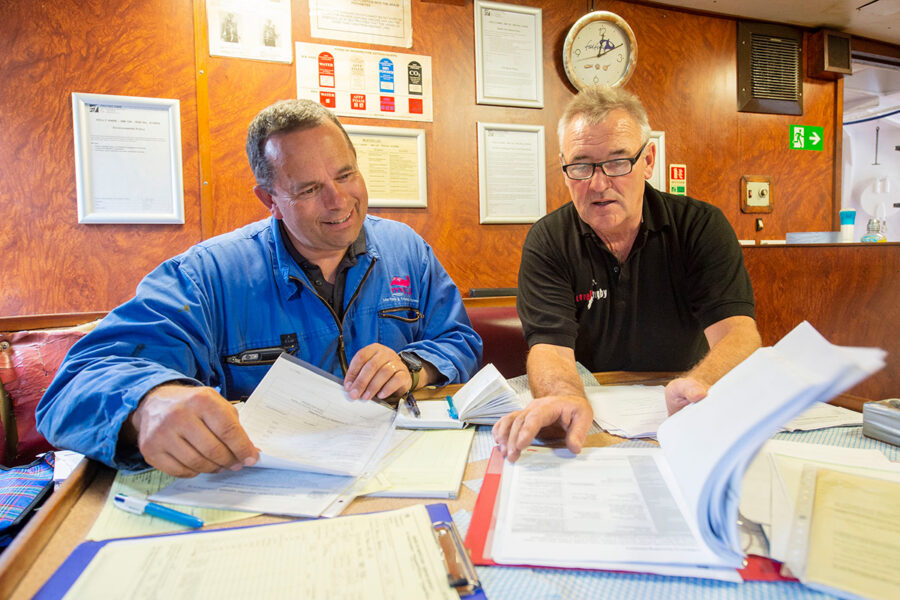In the second of a series of four articles, NFFO risk, safety and training lead Charles Blyth offers advice on preparing for your in-water inspection, now that the new MCA under-15m safety code is in force
No matter what size your vessel is, the level of detail in your MCA inspection is now much greater than it used to be. The surveyor will use an ‘aide memoire’, which you can download from the gov.uk website (search for ‘MSF 5549’). It is worth going through this document to make sure that your vessel and equipment are in good condition and full working order. During the in-water inspection, the surveyor will go through the documentation onboard. This may include servicing certificates for safety equipment, crew qualifications, risk assessments and records of drills. The Safety Folder is a free tool available to owners to help them document their risk assessments, crew details and induction records.

You should expect the in-water inspection to include a thorough examination of all of the documentation onboard, in addition to an inspection of the physical condition of your vessel. (Photo: Geoffrey Lee)
Don’t forget that by 30 November, 2023, the MCA will require all commercial fishermen to hold a medical examination certificate. Search online for ‘MSN 1883’ for more information.
If crew work onboard your vessel, they are also now required to have a fisherman’s work agreement, confirming their living and working conditions, and how their pay is calculated. The MCA has provided a template for owners which can be found by searching for ‘MGN 583’.
The crew should be present for the inspection. The surveyor may wish to witness drills, and for the crew to demonstrate familiarity with the emergency equipment onboard the vessel.
The surveyor is likely to go through all compartments of your vessel and make an assessment of the overall condition. They will also test the emergency alarms such as bilge pumps and fire detection, check all valves are operational, and ensure emergency systems are ready for use, such as man- overboard recovery, anchor provision and emergency steering.
Key points to watch out for include:
- Ensure wiring is in good condition, and that connections are secured and sealed appropriately
- If you have watertight bulkheads, check any cable penetrations are sealed and that the bulkhead remains watertight
- Make sure the bilge pump in the engine compartment is not automatic due to the risk of oil pollution
- Make sure hot surfaces are protected, and that guards are in place for moving parts
- Ensure that rail height is at least 1m in non-working areas. It is recommended that working areas are protected by a removable rail/wire to protect this area when not in use
- Make sure you have a means of recovering an unconscious person from the water.
A stability assessment is also likely to be completed at the in-water inspection, subject to weather conditions. Advice on the stability assessment will be covered in next week’s Fishing News.
A new short film, funded by The Seafarers’ Charity, with more information on how to get ready for your inspection, can be viewed below…
This story was taken from the latest issue of Fishing News. For more up-to-date and in-depth reports on the UK and Irish commercial fishing sector, subscribe to Fishing News here or buy the latest single issue for just £3.30 here.








